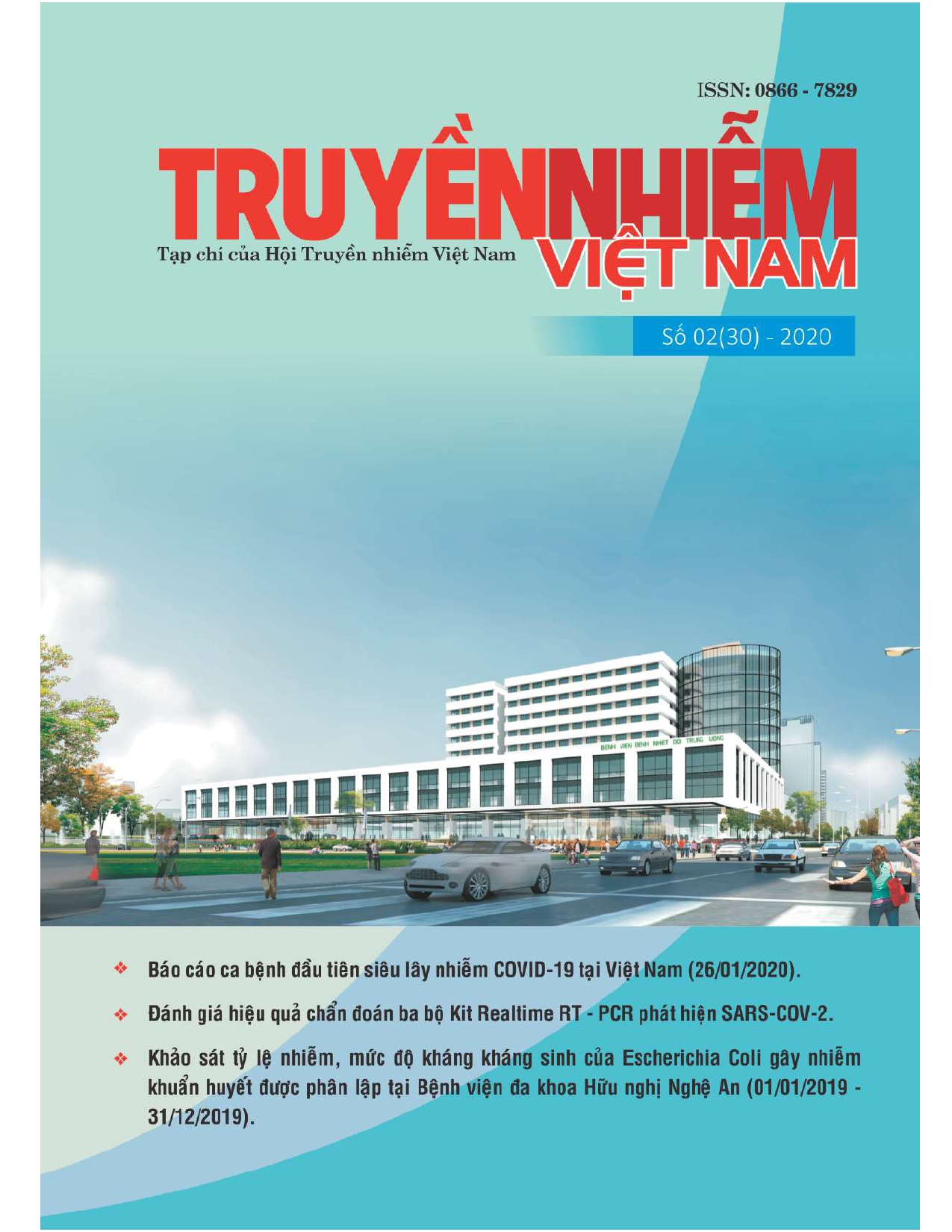CLINICAL EPIDEMIOLOGY, SUBCLINICAL CHARACTERISTICS AND TREATMENT RESULTS IN THE PATIENTS WITH HOSPITAL - ACQUIRED PNEUMONIA CAUSED BY ACINETOBACTER BAUMANNII IN NATIONAL HOSPITAL FOR TROPICAL DISEASES (01/2017 - 12/2018)
Main Article Content
Abstract
Objectives: Describe clinical epidemiology, subclinical characteristics and treatment results in the patients with hospital - acquired pneumonia caused by A. baumannii in intensive care units of national hospital for tropical diseases.
Subjects and methods: Including patients aged 16 years or older diagnosed with HAP caused by A. baumannii treated in National Hospital for Tropical Diseases from 1/2017 to 12/2018. Descriptive and retrospective cross - sectional study.
Results: The male/female ratio was 4/1, the mean age of the study patients was 57.3 ± 16.4, in which 50% of patients have comorbidities, the most common underlying disease was hypertention 24.3%, diabetes 18.6%, COPD 4.3%, alcohol 18.6%. Late - onset HAP: 85.7%. Leukocytes 14.3 ± 6.8G/l, CRP 13.4 ± 24.9mg/l, PCT median 1,52, mix - max 0,06 - 100ng/ml. Chest Xray: diffuse lesions ≥ 2 lobules: 56.9%, new lesions: 74.5%. A. baumannii had antibiotic resistance rates above 70% with most commonly used antibiotics but bacteria were 100% susceptible to Colistin and Tigecyclin. The mean duration of stay in hospital: 25.3 ± 16.2 days. Mortality rates after 28 days: 35.7%.
Article Details
Keywords
Hospital - acquired pneumonia (HAP), Acinetobacter baumannii


